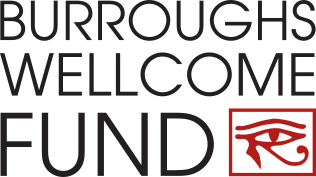Explore more WonderLab learning resources
Overview
An important skill of an explorer is to document what they notice about the world so they can communicate this information to others. One way many explorers do this is by keeping a notebook that includes drawings of their observations, descriptions of what they noticed, and what questions they have about what they noticed. This is an activity to encourage learners to represent their observations through their own drawings. This connects to the wondering teaching strategy of encouraging contemplation by having learners slow down, to become aware of aspects that might have been overlooked if they only quickly glance at an object, and to be aware of both what is happening around and within them as they attend to the phenomenon. By repeatedly drawing the same location, learners will notice commonalities and differences over time.
Guiding Questions
As I observe, what do I see? Hear? Smell? Touch?
As I draw, what do I think is going on?
After I draw, what does this make me wonder?
When to Use This Activity
Complete this activity any time, but it is best if it can be done repeatedly so learners can observe changes over time.
- Time: 20-30 minutes
- Audience: All Ages
- Ease of Use: Simple. This activity provides a way for learners to observe the same location over time.
Learning Objectives
Learners will represent and communicate observations through drawings.
Teaching Approach
- Learner-centered instruction
Teaching Methods
- Encourage contemplation: Encourage students to slow down and use all of their senses to interact with a phenomenon, to become aware of aspects that might have been overlooked at first glance, and to examine both what is happening around and within them as they attend to the phenomenon.
Skills Summary
- curiosity
- wonder
- communication
What You'll Need
- Materials You Provide: paper and something learners can draw with (pencils, markers, crayons)
- Physical Space: location outdoors that is nearby and would allow learners to visit regularly and safely
Directions
1. Frame the observation. Share with learners that they are going to be artists and will go to a location to draw what they see. As the select a site, it is helpful to decide what to draw:
- The artist’s focus should be on something that will definitely be there on multiple visits (Example: a tree or rock or stream will be there; a bird or fish probably will not).
- The artist can decide how close they want to be to what they are observing and be able to be in that spot every time. For example, maybe they sit on the same rock, facing the same way to draw the tree or stream from the same viewpoint.
- Finally, it is important to remind learners that everyone has their own drawing styles. They can use pencil to sketch their observation or use color to make different contrasts stand out. They can zoom in on an object to draw it, or zoom out so more of the environment around the object is included. Drawing conventions like labels and legends can be included as well.
2. Select the observation site. Each artist should have their paper and drawing tools and decide what they are going to observe. Once they have found a spot, they should sit and observe for a couple of minutes before drawing. Each artist needs to decide what is around the object that they want to include in their drawing. How much of the ground or the sky is in the picture? What other living and nonliving things should be included? It is okay if some of the living things that are around the object of focus are there on one day and not another. This might tell them something important about the relationship between that living thing and their object that they could have interesting questions about later.
3. Record the observation date and time and draw what you notice. Give time for each artist to draw what they see. As they observe, it is likely they will notice more, so encourage them to include as much detail as they can. If they have a way to capture what they smell, feel, or touch, encourage them to include those details as well. Provide a graphic organizer for learners to have a space to record the date and time of their observations, a box to draw their observations, and include prompts to scaffold how they observe such as those in the tool: I See … I Think … I Wonder …
4. Record noticings and wonderings. After the artist is done with the drawing, have them record noticings that stood out to them, what they think is going on, and what they wonder about.
5. Repeat steps 1-4 regularly. For artists to notice changes over time, it is important they go back to the same site and repeat their drawing process and document their noticings and wonderings. Depending on the phenomenon, observations could be done multiple times a week (e.g. observing the moon changing over a month) or once a month (e.g. observing seasonal changes in a park).
6. Share and reflect. Provide a space for artists to share their work in a gallery walk format and allow them to discuss patterns and trends across the different drawings.
Modifications, Variations, and Extensions
- Extend this activity by having learners create a story out of their drawings. Refer the Storytelling Road Map tool to help you get started.
Citation
Conijn, J., Rietdijk, W., Broekhof, E., Andre, L., & Schinkel, A. (2021). A theoretical framework and questionnaire for wonder-full education. Journal of Curriculum Studies, 54(3), 423-444.

